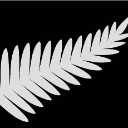- Home
- /
- Programming
- /
- Programming
- /
- Using SAS to pick the largest value within one variable
- RSS Feed
- Mark Topic as New
- Mark Topic as Read
- Float this Topic for Current User
- Bookmark
- Subscribe
- Mute
- Printer Friendly Page
- Mark as New
- Bookmark
- Subscribe
- Mute
- RSS Feed
- Permalink
- Report Inappropriate Content
Hi everyone,
I need some guidance on the following:
My dataset contains 45 observations and 4 variables: cough, fever, sweats, flu; each variable is numerical with choices 1=<2 months, 2=3-4 months, 3=5-6 months, 4=>6 months, 9=unknown.
I need to create a new variable called 'anysymptom' where it would give me the longest duration for any of these symptoms (e.g. for observation 1 that has cough=1 fever=2 sweats=4 flu=9, the new variable would return 4, which is >6 months).
There are also missing values for some of the observations.
Is there a function I could utilize for this?
Any advise is appreciated!
Thanks!
Accepted Solutions
- Mark as New
- Bookmark
- Subscribe
- Mute
- RSS Feed
- Permalink
- Report Inappropriate Content
Like this?
LONGEST=max(FLUE*(FLUE<9), COUGH*(COUGH<9), SWEAT*(SWEAT<9), FEVER*(FEVER<9));
- Mark as New
- Bookmark
- Subscribe
- Mute
- RSS Feed
- Permalink
- Report Inappropriate Content
anysymptom = max(ifn(cough eq 9, ., cough),
ifn(fever eq 9, ., fever),
ifn(sweats eq 9, ., sweats),
ifn(flu eq 9, ., flu));
If there were a lot of variables you could use an array and a loop.
- Mark as New
- Bookmark
- Subscribe
- Mute
- RSS Feed
- Permalink
- Report Inappropriate Content
If the 9 wasn't there this would be much easier, there's the LARGEST/MAX functions. This probably could be tweaked but I suspect @WarrenKuhfeld is probably the easiest or some form of a basic loop where you can ignore the 9.
In this solution, I use the LARGEST() function and loop if it's a 9 so you're not looping through all the variables, only until you find one the largest that's not a 9.
data test;
a=1;
b=2;
c=3;
d=9;
output;
a=2;
b=3;
c=3;
d=4;
output;
a=9;
b=9;
c=9;
d=9;
output;
run;
data want;
set test;
array vars(*) a b c d;
maxv=.; i=1;
do until (maxv ne 9 or i=dim(vars));
maxV=largest(i, of vars(*));
i+1;
end;
if maxV=9 then maxV=.;
run;
proc print data=want;
run;- Mark as New
- Bookmark
- Subscribe
- Mute
- RSS Feed
- Permalink
- Report Inappropriate Content
Here is one way:
proc format; value symptom 9=0 ; run; data want (drop=i);
set have;
array symptoms(*) cough--flu;
do i=1 to dim(symptoms);
symptoms(i)=put(symptoms(i),symptom.);
end;
anysymptom=max(of symptoms(*));
run;
Art, CEO, AnalystFinder.com
- Mark as New
- Bookmark
- Subscribe
- Mute
- RSS Feed
- Permalink
- Report Inappropriate Content
Like this?
LONGEST=max(FLUE*(FLUE<9), COUGH*(COUGH<9), SWEAT*(SWEAT<9), FEVER*(FEVER<9));
- Mark as New
- Bookmark
- Subscribe
- Mute
- RSS Feed
- Permalink
- Report Inappropriate Content
Thank you all for the wonderful advice!
April 27 – 30 | Gaylord Texan | Grapevine, Texas
Registration is open
Walk in ready to learn. Walk out ready to deliver. This is the data and AI conference you can't afford to miss.
Register now and lock in 2025 pricing—just $495!
Learn how use the CAT functions in SAS to join values from multiple variables into a single value.
Find more tutorials on the SAS Users YouTube channel.
SAS Training: Just a Click Away
Ready to level-up your skills? Choose your own adventure.




